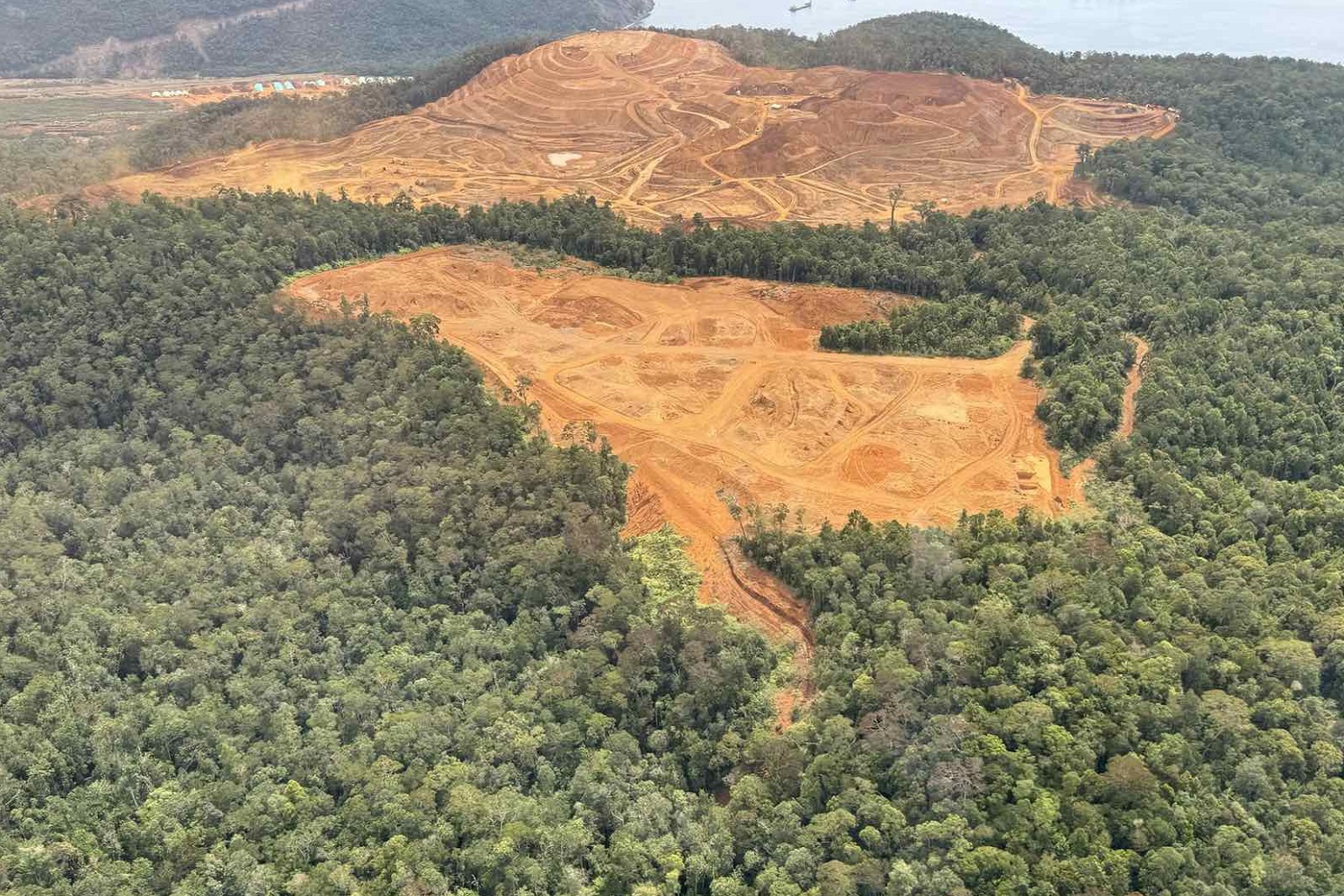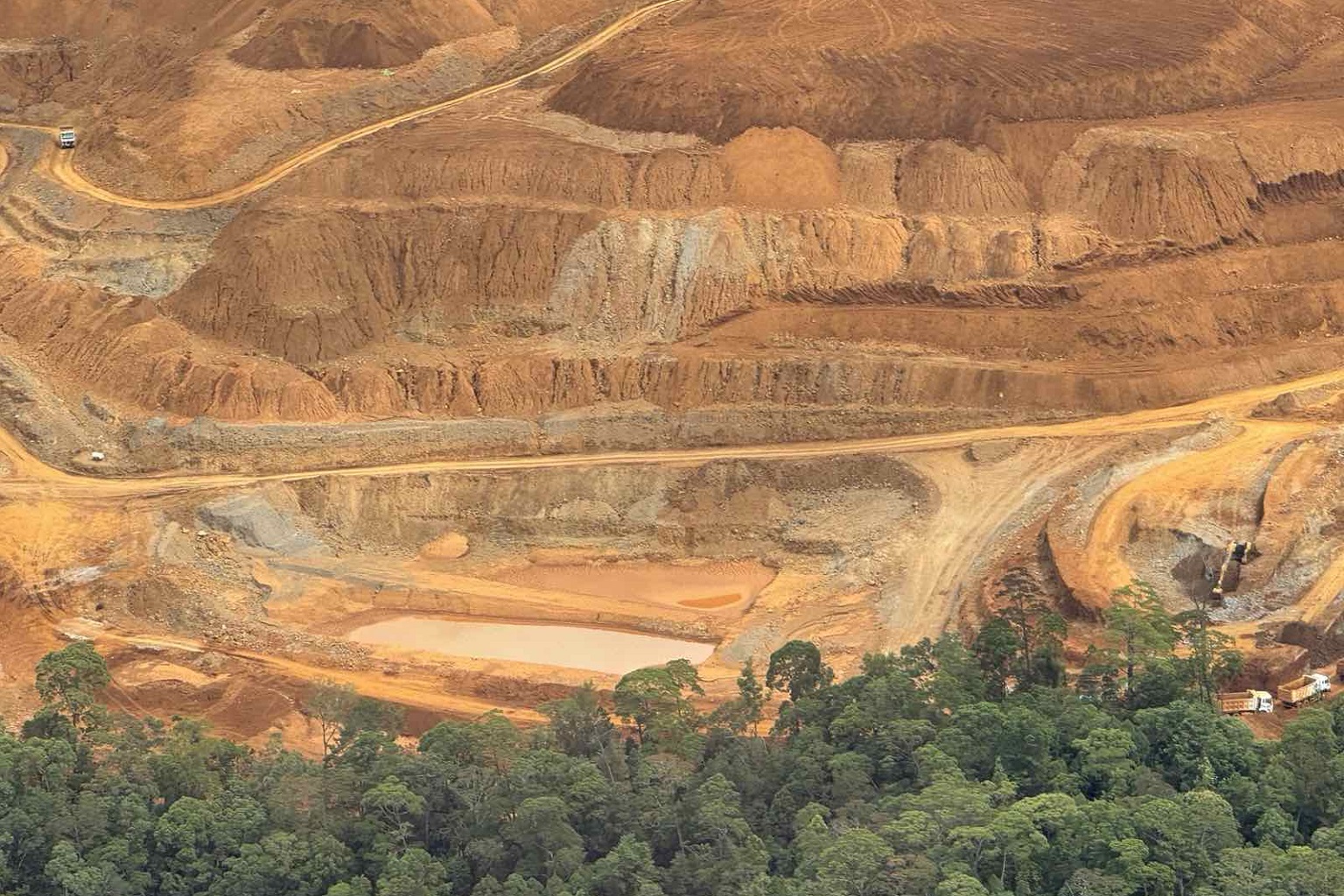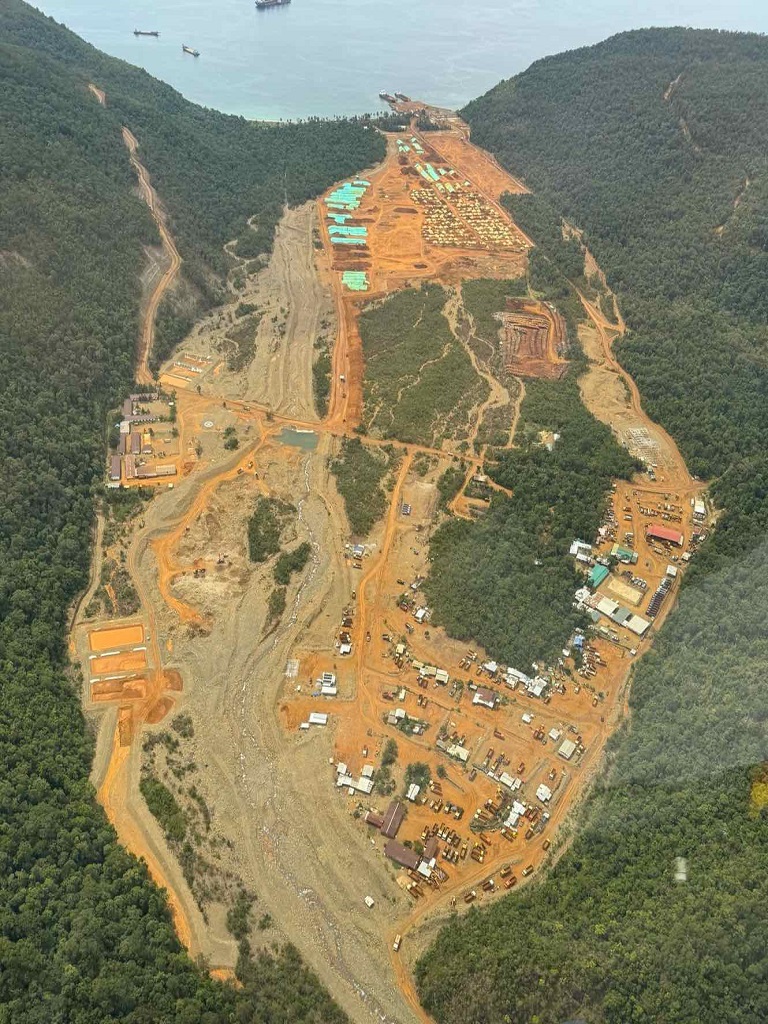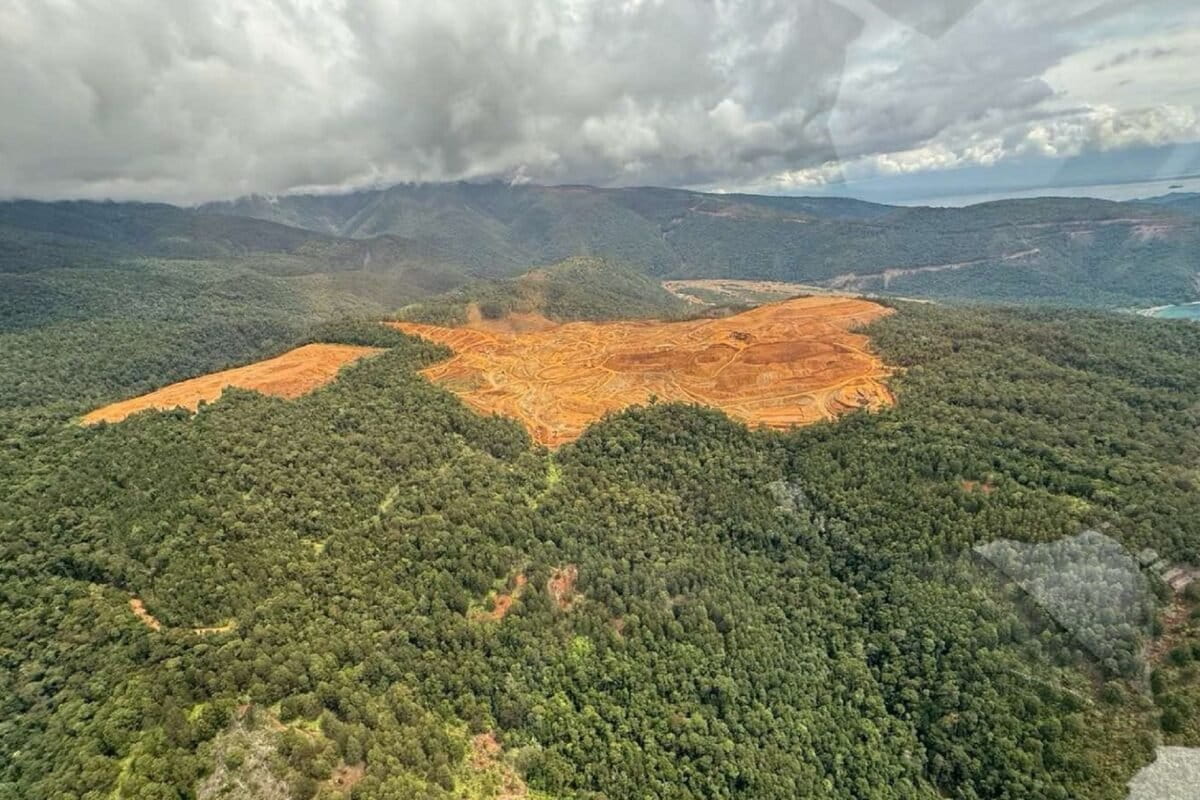- A recent survey by the Davao Oriental provincial government engineering office revealed that a strip mine operating in the province had scraped bare about 200 hectares of forestland.
- After the survey, the provincial governor said the province would order the Pujada nickel mine to cease operations.
- The mine is within 10 kilometers of two protected areas: the Mount Hamiguitan Range Wildlife Sanctuary, a UNESCO World Heritage Site; and the Pujada Bay, a nationally protected seascape.
MINDANAO, Philippines — A nickel mining project in the southern Philippine island of Mindanao is facing renewed calls for closure after a recent government inspection revealed that strip mining there has stripped bare about 200 hectares (494 acres) of forest land in an ecologically sensitive area.
The Pujada Nickel Project, in the province of Davao Oriental, stands about 8 kilometers (5 miles) from the Mount Hamiguitan Range Wildlife Sanctuary, a UNESCO World Heritage site and ASEAN Heritage Park. It also sits 7 km (4.3 mi) upstream from Pujada Bay, a nationally protected seascape into which several rivers and creeks within the Mount Hamiguitan sanctuary drain, including waterways affected by the mining venture.
The Pujada mine is operated by Hallmark Mining Corporation and Austral-Asia Link Mining Corporation under the management of Asiaticus Management Corporation, which are all controlled by Filipino mining investor Pedro O. Tan and his family.
Part of a 2004 action plan to revitalize the nation’s mining industry, the project was awarded a Mineral Production Sharing Agreement in the same year and began commercial shipments in 2016.
Due to its proximity to two protected areas and the anticipated environmental damage associated with large-scale mining, the project has faced opposition for more than a decade from the community-based Macambol Multi-Sectoral Association for Integral Development, the regional environmental group Interfacing Development Interventions for Sustainability (IDIS) and the Catholic Diocese of Mati.

Opposition reached a new level this month, after the Davao Oriental Provincial Engineering Office conducted a visual inspection of the mining site as part of preparations for a government road project in the area, revealing the scope of deforestation.
On Oct. 6, following the inspection, Davao Oriental Governor Nelson Dayanghirang said the provincial government will issue orders suspending mining operations due to the massive environmental destruction to the mountains.
“Money will not last forever, unlike our irreplaceable Mother Earth,” Dayanghirang said in the Cebuano language, as he revealed the nickel extraction had destroyed some 200 hectares of the mountains.
Dayanghirang said the provincial government would intervene not just because of environmental considerations but also because the mining project affected plans to develop a road network to strengthen tourism and transportation in that part of the province.
When Primo Solis, president of the Macambol Multi-Sectoral Association for Integral Development, learned that the mining project had swallowed some 200 hectares of the mountains, he said he fumed with anger.
“We have felt the negative effects of mining, especially our fisherfolk whose catches are down by half [since] mining activities started in our village,” Solis said in Cebuano. “Before when there was no mining, when it rained, our coasts were clear. But now when it’s raining, the water going down the bay comes with mud,” he lamented, stressing that the coastal waters have become heavily silted, forcing fisherfolk to venture farther out to sea.
Reacting to the announcement that the local government intends to stop the mining project, operator Hallmark Mining said in a statement it “understands and shares the deep concern of the Provincial Government of Davao Oriental for the protection of our environment, especially the Mt. Hamiguitan Range Wildlife Sanctuary,” which the firm describes as “a symbol of life and pride” for all residents.
On its website, Hallmark earlier said they had relinquished 7,200 hectares (17,800 acres) of their concession area to expand the Mt. Hamiguitan protected sanctuary.
“We want to assure everyone that we remain firmly committed to responsible mining. Through our Environmental Protection and Enhancement Program (EPEP), we have put in place strong safeguards such as siltation ponds, collector sumps, and active monitoring by the Multi-Partite Monitoring Team, as well as nature-based solutions to nurture biodiversity and prevent harm to the surrounding ecosystems,” the firm said in its Oct. 7 statement.
Fearing the stoppage of its mining operations, Hallmark pointed out that at least 1,800 mine workers and around 3,000 more in related industries could lose their jobs.
Hallmark said it is open to dialogue regarding allegations of environmental damage linked to their mining project.

A unique landscape
The 16,923-hectare (41,818-acre) Mt. Hamiguitan Range Wildlife Sanctuary is best known for its mossy pygmy or bonsai forest. The sanctuary is home to nearly 1,400 species, with about 350 endemic to the Philippines, including the critically endangered iconic Philippine eagle (Pithecophaga jefferyi) and the Philippine cockatoo (Cacatua haematuropygia).
The 21,200-hectare (52,386-acre) Pujada Bay, a protected seascape since 1994, serves as home to both endemic and migratory aquatic species, including the endangered dugong or sea cow (Dugong dugon), butanding or whale shark (Rhincodon typus) and hawksbill (Eretmochelys imbricata) and green sea turtles (Chelonia mydas).
While conceding that the mining venture provides jobs to many, Solis stressed the villagers are better off without the project, as they can live off the bounty of the seas and from various farming activities, mostly from coconut production.
Solis lauded the Davao Oriental provincial government for “hearing the cries of the Earth and its people” when it announced the plan to stop the mining project to prevent further environmental degradation.
Mark Peñalver, IDIS executive director, also said he was appalled by the extent of the damage brought by the mining project to the mountains.
“We fully support the move to stop the mining project. It is a welcome development,” he told Mongabay, stressing the need to hold individuals accountable, both from the government and the company, for the damage wrought to the environment supposedly due to neglect of responsibilities.
Peñalver said his organization raised alarm about the negative environmental impact of the large-scale mining project over a decade ago when it was still in the exploration phase. Since then, he said, IDIS has worked to raise attention about the “clear and consistent dangers” posed by the Pujada project, such as forests being cleared, rivers and coastal areas silting up, eroding farmlands and landslides.
Peñalver said the provincial government’s acknowledgement of these damages is a welcome and painful validation of what communities have long witnessed and a stark reminder that when environmental protection is delayed, the costs multiply, and the victims are the poor and the powerless. “The damage has already been done, and its consequences are now being felt by communities, ecosystems and future generations,” he said in a separate media statement.

The mine has been closed before
In July 2016, the mine made its first shipment of 54,747 wet metric tons. China is the major market for the Philippines’ nickel deposits, an important component to the clean energy transition such as for use in electric vehicle batteries.
In December 2016, then-Environment Secretary Gina Lopez suspended the mine’s Environmental Compliance Certificate due to the risks it posed to Mount Hamiguitan and Pujada Bay as well as alleged violations including failure to address nickel ore stockpiles.
The suspension of the ECC was lifted in October 2019 by Lopez’s successor, Roy Cimatu, after his office determined the issues had been addressed. However, due to disruptions caused by the COVID-19 pandemic, normal mining operations did not resume until 2021.
At that time, the extent of mining extraction was still not visible, recalled an enraged netizen commenting on the photos of damaged mountains released by the provincial government.
“The damage is now terrible,” Facebook user Mary Jastine Lapating wrote. “Environmental right is a public right. Mining affects the communities present near Mt. Hamiguitan.”
The destruction wrought by the Pujada mine has also reached the attention of religious leaders in the capital, some 1,500 km (932 mi) north of Davao Oriental, who also have been campaigning for environmental protection.
Bishop Cardinal Pablo Virgilio David, president of the influential Catholic Bishops’ Conference of the Philippines (CBCP), urged the provincial government not only to stop the mining operations, but also to bring to court those responsible for causing the environmental catastrophe.
“There must be accountability,” David said in a statement. “This is the same story repeated across our archipelago: extractive industries profiting from the earth’s riches while communities are left to suffer the ruins.”
Indigenous Filipinos fight to protect biodiverse mountains from mining
FEEDBACK: Use this form to send a message to the author of this post. If you want to post a public comment, you can do that at the bottom of the page.
